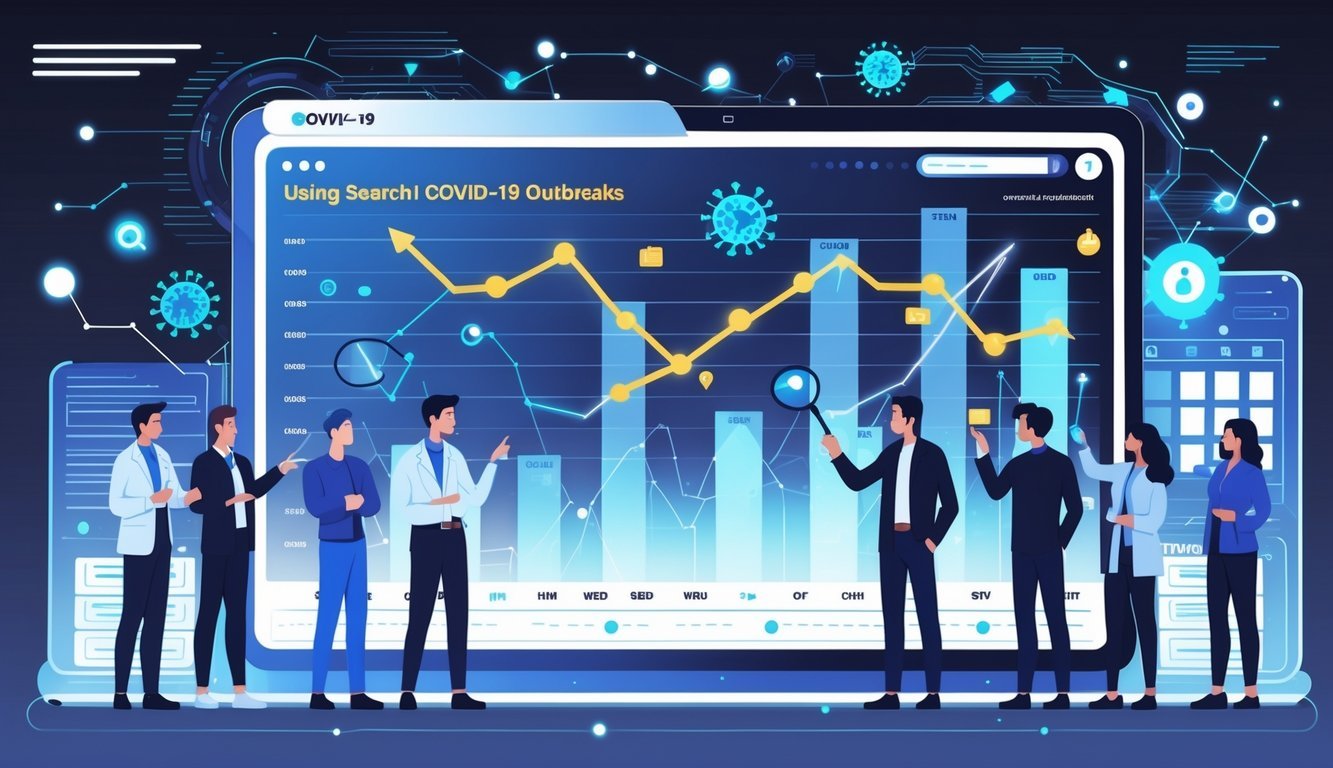PsychNewsDaily Publishers
100 Summit Drive
Burlington, MA, 01803
Telephone: (320) 349-2484
PsychNewsDaily Publishers
100 Summit Drive
Burlington, MA, 01803
Telephone: (320) 349-2484
Online searches for COVID-19 symptoms and testing can indicate potential outbreaks weeks before official reports, aiding health organizations in timely response and preparedness.

People usually hop online when they want answers about health stuff. With COVID-19, these searches—think symptoms, tests, and safety tips—have lined up pretty closely with real outbreaks. When experts track how often folks search for COVID-19 terms, they can spot where and when outbreaks might hit, sometimes weeks before the official numbers even budge.

This early warning system works because people start looking things up online when they feel sick or hear rumors about local cases. By using tools like Google Trends, researchers catch rising interest in COVID-19 topics in certain areas and get ready to respond.
This method adds something new to the usual health tracking. It gives you a chance to stay informed even earlier.
Not every search points to a new outbreak, and news stories can mess with the data. Still, watching web searches offers a peek into how the virus spreads and helps communities get ready faster.
Knowing this stuff can make you more aware of how data shapes public health efforts.

You can use web searches to get early hints about COVID-19 trends. When a bunch of people start searching for symptoms or testing info, it’s usually a sign that cases might rise soon.
This info helps track the pandemic before the official reports catch up.
Search queries act like digital signals of what people are feeling in real time. When lots of folks look up things like “fever,” “loss of taste,” or “COVID testing,” it shows where new infections might be starting.
People usually search for symptoms before they see a doctor or get tested. Early warning systems track and analyze these search patterns to spot jumps quickly.
This helps health groups get ready for possible spikes. It gives you a heads-up about outbreaks weeks before hospitals fill up.
Google Trends shows how often people search for specific COVID-19 terms. This data reflects public worry and possible symptom spread.
Researchers noticed that spikes in searches sometimes happen two or three weeks before local case numbers go up. By keeping an eye on Google Trends, you or health workers can guess where COVID-19 cases might grow next.
It’s pretty handy when testing or hospital data are running late. The trend data includes searches like “coronavirus symptoms,” “loss of smell,” and “COVID test near me.”
Machine learning (ML) and artificial intelligence (AI) take search data a step further. These tools look at tons of search queries and other info, like social media posts, to spot patterns.
With ML models, you can predict COVID-19 outbreaks with more accuracy. They learn from past data to forecast where and when new cases might show up.
AI helps health organizations spot trends faster than old-school methods. That gives them a better shot at timing public health responses.
Public health agencies use web search data to strengthen their surveillance systems. This adds a real-time tool alongside lab tests and hospital reports.
When you combine these sources, you get a clearer picture of how the pandemic’s moving. Monitoring systems that include search data help spot outbreaks sooner.
This lets health officials make quicker decisions about testing, contact tracing, and getting the word out. It also helps with global pandemic control by sharing timely info among health groups.

Using search data to predict COVID-19 outbreaks isn’t simple. It depends on how different regions behave, how models use demographic and risk data, and the impact of misinformation online.
Each of these shapes how well search trends can point to real changes in the virus spread.
Search data patterns can look totally different between countries like the U.S., India, Canada, and Iran. In the U.S. and Canada, where internet access is high, search volumes for symptoms or testing usually line up with case rises a few weeks before the official reports.
In India and Iran, internet use varies by region, so predictions get less consistent. Cultural behaviors and healthcare access also shape search trends.
In some areas, people might search more about treatments or chronic disease risks tied to COVID-19, which changes the data. Prediction models need to adjust for these local details to get more accurate.
When you use search data, mixing it with risk assessment and demographic info makes predictions stronger. Models like logistic regression weigh things like age groups, population density, and known health risks, such as chronic diseases, to forecast outbreaks more reliably.
Systematic reviews that compare different methods show that adding data like mental health searches or hospital visits can help predict severity, including mortality rates. This makes search-based forecasts more useful for public health decisions, especially during a pandemic.
You should know that misinformation and social media trends can mess with search data. False info about treatment or disease control spreads fast online and can trigger spikes in weird or inaccurate search queries.
This noise makes it tougher to get clear signals from search volumes when tracking real outbreaks. Sometimes people search again and again out of fear, not symptoms.
Tackling this means using filtering methods and keeping up with constant monitoring to keep predictions on track during public health emergencies.

You can use online search trends to spot changes in how people look for info about COVID-19. These patterns often show up before official case numbers do.
Web search trends show what people are worried about. When lots of people start searching for COVID-19 symptoms or prevention tips, it might mean cases are about to rise.
Spikes in searches for words like “fever,” “cough,” or “loss of taste” usually show up before more positive cases are reported. More searches for prevention, like “wash hands,” can also signal growing concern.
Symptoms like fever, cough, sore throat, and loss of smell or taste tend to drive more searches. People usually look up COVID-19 info about these symptoms before outbreaks spread wider.
Spikes in certain search terms often happen two to three weeks before official case numbers go up. Search data gives you an early heads-up about future outbreaks.
Search trends can predict outbreaks about two to three weeks in advance. That lead time helps people and health officials get ready for a rise in cases.
Absolutely. If you keep an eye on search trends, you might spot early signs before official reports come out.
Health organizations can jump in quicker when they notice these trends. That means they can warn people sooner and give better support during outbreaks.